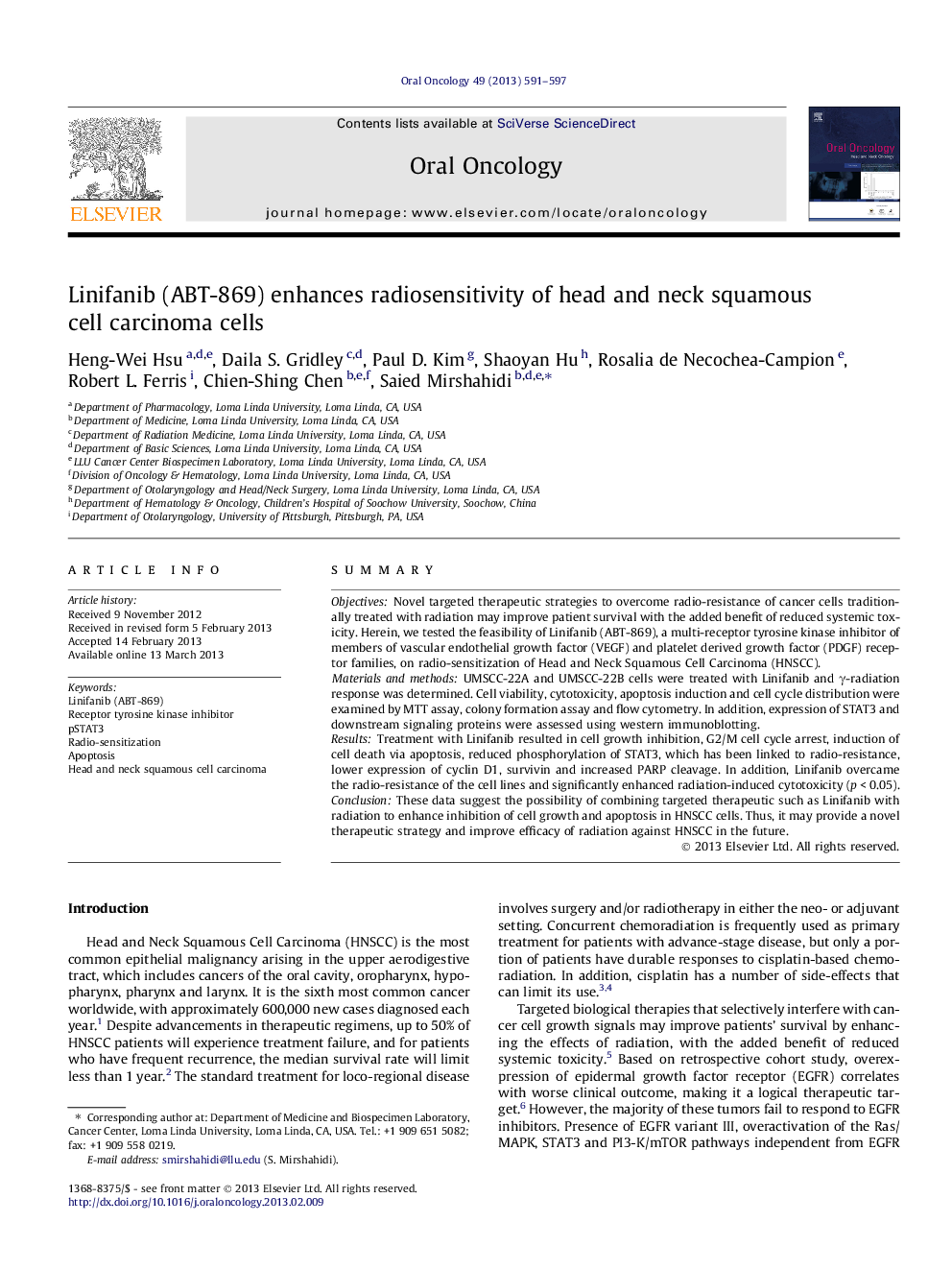| Article ID | Journal | Published Year | Pages | File Type |
|---|---|---|---|---|
| 6055233 | Oral Oncology | 2013 | 7 Pages |
SummaryObjectivesNovel targeted therapeutic strategies to overcome radio-resistance of cancer cells traditionally treated with radiation may improve patient survival with the added benefit of reduced systemic toxicity. Herein, we tested the feasibility of Linifanib (ABT-869), a multi-receptor tyrosine kinase inhibitor of members of vascular endothelial growth factor (VEGF) and platelet derived growth factor (PDGF) receptor families, on radio-sensitization of Head and Neck Squamous Cell Carcinoma (HNSCC).Materials and methodsUMSCC-22A and UMSCC-22B cells were treated with Linifanib and γ-radiation response was determined. Cell viability, cytotoxicity, apoptosis induction and cell cycle distribution were examined by MTT assay, colony formation assay and flow cytometry. In addition, expression of STAT3 and downstream signaling proteins were assessed using western immunoblotting.ResultsTreatment with Linifanib resulted in cell growth inhibition, G2/M cell cycle arrest, induction of cell death via apoptosis, reduced phosphorylation of STAT3, which has been linked to radio-resistance, lower expression of cyclin D1, survivin and increased PARP cleavage. In addition, Linifanib overcame the radio-resistance of the cell lines and significantly enhanced radiation-induced cytotoxicity (p < 0.05).ConclusionThese data suggest the possibility of combining targeted therapeutic such as Linifanib with radiation to enhance inhibition of cell growth and apoptosis in HNSCC cells. Thus, it may provide a novel therapeutic strategy and improve efficacy of radiation against HNSCC in the future.
